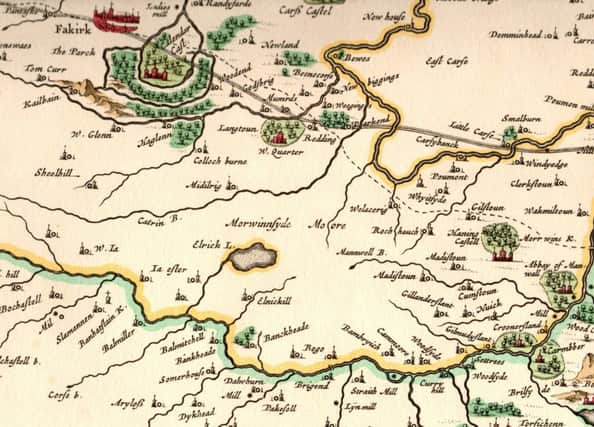John's labour of love is a masterpiece of detection


At the time I wrote that it was “the best reference book ever written about the history of our area and will remain the authoritative work on the subject for many decades if not hundreds of years.”
The intervening 10 years have confirmed my view that the book is the key to understanding much of our local history and a must for all with an interest in Falkirk’s story.
Advertisement
Hide AdAdvertisement
Hide AdAs every family history researcher knows, the further back you go the harder it gets.
Sources dry up and what little information there is may be incomplete or contradictory.
General historical research is just the same and the job of reconstructing the distant past is extremely difficult.
Archaeology helps but it’s not always available and gives only a partial picture. It’s a bit like doing a jigsaw when you are missing pieces, don’t know how many there are and have no idea what the finished image looks like.
Advertisement
Hide AdAdvertisement
Hide AdThis is where the study of place names comes in, cutting through the gloom and shining a light on distant decades.
One glance at a local map provides a feast of names, many of them thousands of years old and most with a story to tell about the particular field or settlement, hill or stream they describe.
Often they tell us about the shape of the land or what it was used for in ancient times.
Sometimes they preserve the name of a building or person long departed, like Jenny Mair’s Burn or Maggie Woods Loan.
Advertisement
Hide AdAdvertisement
Hide AdOccasionally the meaning is fairly obvious like Standalane or Greenhill and sometimes it’s not too difficult to work out, like for example Cobblebrae in Carron near the place where the little ferry boat (the cobble) carried passengers over the river in ancient days. Simple enough ... but how about Balquhatston or Pamphellgoat?
More often than not the task of unpicking the meanings from words which may have changed language or spelling many times is not at all easy.
There are many Gaelic elements as well as more ancient Pictish forms. Bantaskine is a good example.
It first appears as ‘‘Pettintoskan’’ meaning something like ‘‘land belonging to a township or settlement’’. The ancient parish of Bothkennar is also Gaelic in origin, the ‘both’ part meaning church and the rest probably referring to a Celtic saint, giving us ‘the church of Saint Cainner’.
Advertisement
Hide AdAdvertisement
Hide AdQuite often the modern name bears no relation to its original meaning.
Lionthorn has nothing to do with lions or thorns but at one time was written as ‘‘Lying Tam’’ which, in its original form, probably meant a mossy hill.
By a process of error and misunderstanding it was eventually corrupted to the present version.
You would need to be a detective to make sense of it all and help explain how our area developed.
Advertisement
Hide AdAdvertisement
Hide AdJohn Reid is our own ‘‘Sherlock Holmes of the Place Names’’ and his book not only explains the process by which the words evolved but provides over 3000 meanings covering every corner of the district. When it was first published it sold out very quickly but I’m delighted to say that the History Society has acquired a number of copies. The book costs £10 and anyone interested can contact me on [email protected].
So if you’re puzzled about Slamannan or Skinflats, Foggermountain or Fankerton, Todhill or Tygetsheugh, Dalderse or Drumbroider then puzzle no longer. Help is at hand.